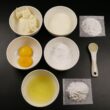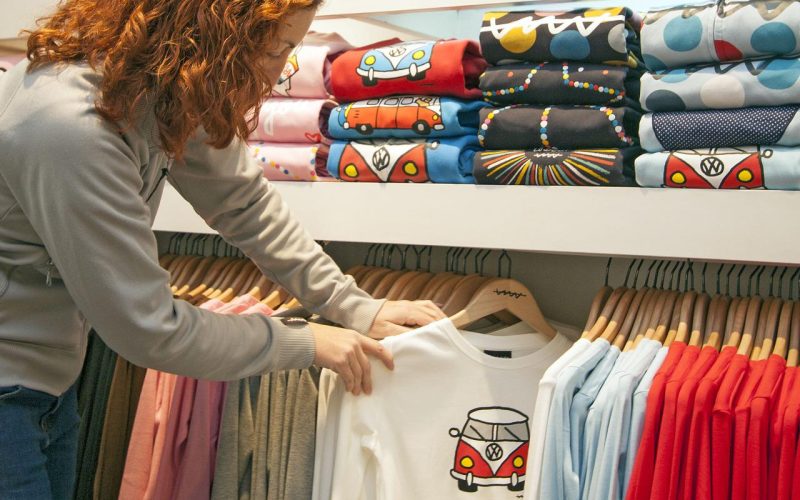Have you ever wondered about the processes behind going from a plain t-shirt to a printed t-shirt with a pattern in a riot of colors and sometimes with words that speak to you individually?
Each type of shirt printing technique has its style and level of complexity.
With so many t-shirt printings available, how do you know which one to choose?
The most popular types of t-shirt printing are direct-to-garment(DTG), sublimation, and screen printing.
Techniques such as vinyl cutting, heat transfer, and stenciling work well for small print jobs.
Indirect screen printing, discharge printing, and airbrushing are some other options.
In this article, you will learn how the ten most popular types of shirt printing work.
You will know which printing methods on t-shirts take the most time and cost the least.
Finally, you will find tips for printing your t-shirt at home!
What Are the Different Types of Shirt Printing?
You can print on t-shirts using various techniques, such as applying ink directly to the fabric, applying ink to paper and then transferring it, which then adheres to the fabric, or even cutting vinyl to secure it to the shirt’s fabric.
Each method requires specialized equipment and supplies. Some require expensive trade technology, while others can use basic crafting supplies.
This means that some types of printing can need relatively high start-up costs.
Another thing to consider is that certain methods work better on certain fabrics, like polyester versus cotton.
Finally, some printing methods work well for just one or two shirts, while others require so much setup work that you’ll see better ROI if you can handle large batches of shirts at once.
Check out this review of how the different main types of shirt printing work!
1. DTG
DTG stands for direct-to-garment printing. Sometimes, you may also see this method called DTF or direct-to-fabric printing.
Professionals appreciate it. It works like printing on office paper; you’ll need ink and a textile printer to use the method.
The process does exactly what it sounds like a special printer applies fine ink directly to the shirt’s fabric! This means you can easily create any design you can print on paper.
You can use many colors, create intricate graphics, or even photos.
Computer programs such as Adobe Photoshop allow you to precisely define the smallest details and transfer them to the t-shirt using a printer.
The ink soaks into the shirt’s fabric a little, meaning the design feels soft to the touch instead of creating a stiff layer.
Another advantage of this method is that it allows you to quickly run through multiple designs without worrying about complicated settings.
Since the ink used here is thin, no thick design layer will be created.
So, what are the drawbacks of using the DTG method? On the other hand, purchasing a good DTG printer will cost you between $10,000 and $500,000.
So, if you’re considering starting a shirt printing business, that upfront cost is probably worth it, but obviously, it’s not the best option for a home-based artist.
Although you can easily set up and use a DTG printer once you master the basics, you will need some understanding of graphic design to set up designs on your computer.
If you decide to use DTG, it’s best to check the printer’s quality. If you use a poor-quality printer, you will likely end up with low-resolution printing with ugly dot patterns.
Finally, while DTG designs look great, they don’t hold up to long-term and some other types of designs.
2. Indirect screen printing / Plastisol
Plastisol or indirect screen printing is gaining popularity among different types of shirt printing.
This method combines some of the fundamentals of screen printing with screen-printing plastisol ink.
The main difference is that the artist applies the ink to the plastisol transfer sheet, not directly to the fabric.
The transfer sheet is heat-pressed onto the t-shirt, creating a durable raised pattern on the fabric’s surface.
To cut costs, some designers create digital designs and send them to a third party that can easily mass-produce plastisol panels. The artist then uses heat to apply plastisol to the shirt.
This method offers advantages, including high-quality and durable designs.
Plus, it creates far less clutter and requires less setup time than regular screen printing.
If you are ordering a plastisol transfer sheet print, all you have to do is create a digital graphic design and then have a heat press on hand to complete the t-shirt.
The disadvantages of this method include the cumbersome application of the plastisol transfer. When done incorrectly, the design will crack and peel off later.
In addition, this method works very well for small orders but less well for larger orders.
3. Heat Transfer Vinyl
Using heat transfer vinyl is another popular way of decorating shirts for professionals and hobby artists.
HTV vinyl is a unique type with a decorative side and a side coated with heat-activated glue.
You can cut letters, logos, or even intricate images out of vinyl, then use heat to seal the cutout into the fabric. The heat press can either be a machine or an iron box.
Although not technically a “printing” method, many artists use vinyl instead of ink to create lasting embossed designs on t-shirts.
Large-scale professional operations will likely use huge commercial cutting machines to create vinyl designs.
However, local artists love this method because they can make vinyl cuts with a simple electronic cutting machine like Cricut.
You can also use many variations of basic vinyl laminate, including glitter vinyl, flocked or velvety vinyl, and metallic vinyl.
Heat transfer vinyl gives you great flexibility for small orders or home use.
If you want to make jerseys for your child’s basketball team, you can start with nothing more than cutters and irons! If you’re starting a small business, you can start with as little as a Cricut and a heat press.
Besides low start-up costs, HTV design is generally not time-consuming or labor-intensive compared to many other types of shirt printing.
Additionally, HTV designs have greater durability than almost any printed design.
The downside of using the HTV is that it doesn’t work well for large orders because you have to cut the HTV multiple times for each t-shirt.
You can also not use HTV on heat-sensitive fabrics; you must activate the vinyl glue with a heat press.
4. Heat press printing
Heat printing would be convenient if you start printing on t-shirts and don’t have many or large orders. It is another good choice for a novice or home artist.
It will save you resources and time, although it generally does not offer high-quality printing like other methods.
Besides, some professionals or small business owners offer heat-printed t-shirts for sale.
Heat press printing is a method of printing designs from a computer using an inkjet or laser printer.
You must print on an iron-on transfer paper. Then, you can stick the design onto your T-shirt with an iron or heat press!
In most cases, vinyl is used as the transfer paper, with adhesive material on one side and tape on the other.
After printing your design and attaching it to the shirt, grab the tape and peel it off, leaving only the design. The tape is usually the shiny side, which you need to remove.
This method is great for home designers because it is easy to set up and has a low start-up cost.
It allows you to create intricate drawings or photos as easily as on paper.
To create original artwork, you need to be an expert in graphic design software, but you can also use images you find online or photos you take on your cell phone!
On the contrary, heat press printing may not last as well as screen printing or HTV design.
It also usually doesn’t work on dark-colored T-shirts because the design won’t look good without a light background.
Finally, this method requires a lot of heat, so it can’t be used on heat-sensitive fabrics.
5. Heat transfer printing/inkjet
Heat transfer printing can work in different ways. It can be used similarly to the heat press method mentioned above.
Your design can also be printed on vinyl; a heat press is used to adhere the vinyl to the t-shirt.
Either way, using an inkjet printer to place the design on a type of transfer makes the process relatively easy. You don’t need an expensive printer or lots of special supplies.
However, it takes a long time to set up each transmission and heat press it on the shirt.
One of the benefits of heat transfer printing with an inkjet printer is that it is also one of the different types of shirt prints you can quickly try out at home.
You will get a decent-quality of your design, and if you want, you can use a complex image like a photo.
However, this method takes longer than other shirt printing processes, so it is not usually chosen by professionals.
It also creates a solid layer on the fabric that may not feel comfortable, and the pattern will only show on white or light t-shirts.
6. Screen printing
Screen printing is one of the highest-quality types of shirt printing and allows for much creativity and artistry. It is also among the oldest printing techniques in the world.
For screen printing, you create the negative pattern you want on the screen.
Then, you run a special ink called plastisol over the screen and press the sieve onto your shirt.
This pushes the ink through the negative space pattern in the design and creates an image on the t-shirt.
You can make complex screen prints using special chemicals to create photorealistic patterns on screens.
Alternatively, you can screen print in a very basic format using Cricut to create a screen template.
Screen printing has many advantages, making it popular for top professional shirt designers and hobby artists. First, it creates colorful and very durable designs.
They have a slightly stiff, raised feel on top of the fabric, but the ink is absorbed into the material, making it more durable than the HTV design.
Second, screen printing offers a low-cost option to bulk order the same shirt because you can reuse the ink screen you painstakingly set up for the first t-shirt.
Finally, you can screen print on almost any fabric, from silk to cotton to polyester. Of course, this popular method has potential downsides.
It requires a large workspace and equipment like a screen and a press to align the screen with the shirt.
If you want to create intricate designs, you also need special chemicals.
Finally, the screen print design usually works best with one to three colors because you must layer each color one screen at a time.
7. Sublimation
Sublimation printing is the most professional way to print on polyester.
However, it does not work on other fabrics, such as cotton, with natural fibers.
This cool but very expensive method uses heat to convert the dye into a gas that sticks to the fabric.
Sublimation printing creates smooth, durable designs on synthetic materials such as polyester.
Due to the unique way the paint adheres to the fabric, it leaves the fabric feeling breathable and does not create a thick layer on the material.
It also means the sublimation designs will not crack or peel. The disadvantage of this technique is its price.
It would help if you had a lot of commercial equipment for this process, which makes it more cost-effective for a large company than for home use or a small business.
Furthermore, the sublimation method cannot be used on cotton t-shirts.
8. Discharge print
Discharge printing is not widely used among other types of shirt printing, but it creates a unique shirt. This process works by removing the paint instead of applying it!
The printer uses a stencil to protect part of the t-shirt design, then bleaches out the rest of the color, leaving only the color design.
You might like to try this technique at home with friends to create stylish, vintage-looking T-shirts. This technique’s great advantage is its unique appearance.
While this process creates unique vintage-style shirts, it is time-consuming and expensive, which makes them unpopular with professionals.
9. Stenciling
The most straightforward technique for home shirts is stenciling. You can cut the template manually or use a more advanced tool, like a Cricut, to cut digital designs electronically.
Then, apply the color to the template, creating a logo or design on the t-shirt!
Professionals frequently used more advanced stenciling techniques such as screen printing.
However, if you want to create fun t-shirts for your family, you can repeat this at home with very simple tools.
The advantage of stenciling is that you can make it as intricate or simple as you want. Plus, you don’t need modern technology or expensive equipment.
You don’t need a heat press, although you generally get longer-lasting results if you heat the fabric design somehow.
The downside is that this simple method works best for personal use and won’t give you the professional design you need if you want to sell t-shirts.
10. airbrushing
Airbrushing isn’t the best t-shirt design option for big business operations, but it’s still hugely popular among artists and small business owners. This method allows for incredibly intricate and artistic designs.
You can also use this approach as a standalone replacement for screen printing by airbrushing over stencils, one coat at a time.
One of the advantages of this method is its versatility. If you’ve ever seen an airbrush artist at work painting a caricature in a public park or perhaps a chef using a food-safe airbrush brush to decorate a cake, you know how great they can paint with this tool.
Another cool feature of airbrushing is that it doesn’t take much time to get started, and you can mix and use multiple types of paints or stains.
The disadvantage of the airbrush is, above all, the time it takes. Although this method allows many artistic expressions, making a t-shirt can take hours.
It can also be difficult to replicate shirts if you want multiple identical designs accurately.
Best Way to Print Cotton T-shirts at Home
The best way to print cotton t-shirts at home is to use the heat transfer method with an inkjet printer or cut and use the HTV design.
If you have a standard inkjet or laser printer in your home or office, you can easily create any design and then use an iron or small heat press to seal the transfer paper onto your shirt.
Likewise, if you have Cricut or even want to cut the vinyl shape with a knife or scissors, you can easily apply the heat-activated glue to a cotton shirt at home.
Cotton can withstand high temperatures, so any method that uses a heat press or iron works well on this type of shirt.
If you want it simple, use a stencil, fabric dye, or paint on a cotton shirt at home.
What Type of Print is Best for Polyester Shirts?
The best professional printing on polyester t-shirts uses the sublimation printing process; however, you can print on polyester at home with screen printing or other methods.
One thing to remember with polyester is that it is heat-sensitive. If you watch the temperature and time, you can use a heat press, but it’s much more difficult than working with stronger cotton.
What is the Most Durable Type of Shirt Print?
The most durable types of t-shirt printing are sublimation and screen printing, although several other methods are time-consuming.
Alternatively, DTG designs can start to fade, and heat transfer designs may crack or peel over time.
HTV designs will last a long time, but they can also start to crack over time.








